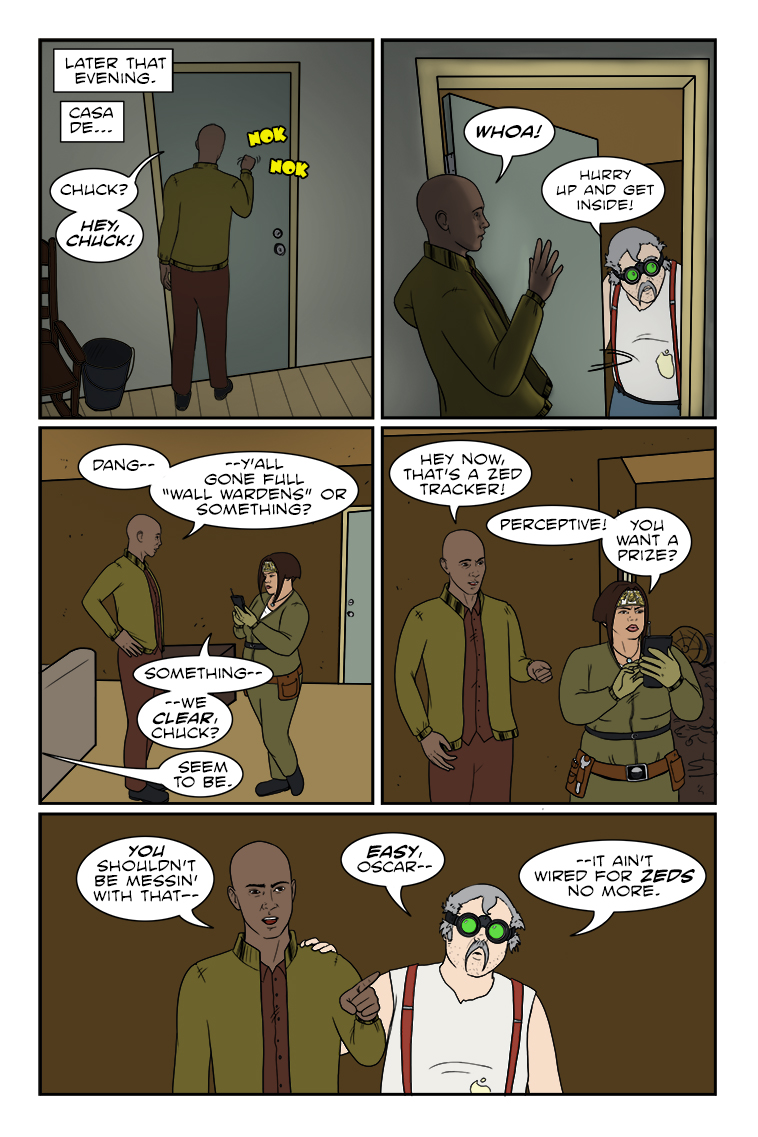Cart
Product categories
Support Us!
If you like what I do please support us on Ko-fi or Patreon.
Follow Us!
Join Our Newsletter!
Vote For Us!
Login
Polls
Events
-
Pasadena Comic Con
Dates: Jan 26
Location: Pasadena Convention Center, 300 E Green St, Pasadena, CA 91101, USA ( MAP)Details:We will be at the Pasadena Comic Con on January 26th. See some of you there for this one day event!
Purchase tickets online at here: https://www.tixr.com/groups/pcc/events/pasadenacomiccon-pasadena-comic-con-2025-115248









3 thoughts on “536 – Great State Of Tech Sass”
Anonymous
Amusing spam above … Things are about to get weird with Casa De Chuck!
Dawn
Ugh, I try to get to the SPAM quicker but we have a new kitty and I have been distracted. It is gone now. 😀
Anonymous
New kitty tops spam any day … and I enjoy getting to see it in it’s brief lifespan.
Latest Comics
#518. 497 – Sniff Check
52 Aug 10, 2022
#517. 496 – Saved By The Ble-e-gh!
52 Jun 22, 2022
#516. 495 – Deus Ex Caprica
49 Jun 01, 2022
#515. 494 – Once More With Chambering
48 May 18, 2022
#514. 493 – Gun Shy
51 May 04, 2022
#513. 492 – Darkness Crawls
56 Apr 27, 2022
#512. EPISODE TWENTY-ONE
66 Apr 25, 2022
#511. 491 – Surprised Mechanic (END OF EPISODE 20)
51 Mar 02, 2022
#510. 490 – Nope Problem
45 Feb 16, 2022
#509. 489 – Crappy Returns
44 Feb 02, 2022
#508. 488 – Bad Shape
43 Jan 19, 2022
#507. 487 – Got Beef?
50 Dec 15, 2021
#506. 486 – Get The Lede Out
49 Nov 24, 2021
#505. 485 – Proof Of Life
47 May 12, 2021
#504. 484 – Words Of Wisdom
45 Apr 28, 2021
#503. 483 – Solar Systems
46 Apr 21, 2021
#502. 482 – His Body His Business
42 Apr 14, 2021
#501. 481 – Re-capitulation
43 Apr 07, 2021
#499. 479 – Guilty Measure
41 Mar 17, 2021
#498. 478 – Mirthful Stereotype
39 Mar 10, 2021
Latest Chapters
Episode 22
Episode 21
Episode 20
Episode 19
Episode 18
Episode 17
536 – Great State Of Tech Sass
Welcome to Team Paranoid, Oscar! Spoiler alert: they really are out to getcha!
Next comic page planned for Nov. 20th. In the meantime, please accept this documentary evidence of new kitten Morgoth as he discovers the enigma that is the empty soda box.
Stoicism and absurdity
“What explains the Westerns? World War II, I think,” Edlund says by way of comparison. “Where does the wounded fucking guy who can’t tell his pain to anybody — where does that come from? Where does emptiness, peace, and quiet as a fantasy come from? What is the story of all that shit?”
This put me in mind of a documentary called Five Came Back that Dawn and I watched not too long ago, which spent some time on famous Western filmmaker John Ford and how his military service in WWII informed his postwar work. You need only watch Stagecoach (1939) and The Searchers (1956) back-to-back to see a fairly gaping tonal difference even though the superficial elements are the same (including John Wayne being the star). Westerns of course predate the start of World War II, but it’s only after the war that you really start getting that genre feel of the lone man or small band of men on their own, often struggling to deal with a world that no longer seems to understand them or have a place for them. I’ve talked up George Stevens’ Shane (1953) before as the arguable ur-example of this, and wouldn’t you know it, Stevens was on the frontlines of WWII as well. What also struck me about Edlund’s quote was thinking back to how The Searchers unabashedly interrupts its dark existentialism towards the end for an absurdly staged, lengthy fistfight at a wedding party, complete with one of the guys involved all but calling a time out while he gets someone’s abandoned fiddle out of the way before the next punch. It goes on for so long and is so comically bizarre that the only comparison I have is the similar scene in They Live where two grown, burly men are fighting over one of them putting on a pair of sunglasses. And yet that’s the thing, isn’t it? Catch-22 and other works like it certainly prove that darkness and absurdity can walk hand in hand. Stoicism and absurdity are also aspects that can go together… The Tick isn’t really a stoic sort but if you’ve never seen the movie Airplane!, the performances of Leslie Nielsen, Peter Graves and Robert Stack in that movie are perfect specimens of how being oh-so-serious can be oh-so-funny. The idea of “deadpan humor” is entirely built around this phenomenon, and in the world of Zombie Ranch Frank is probably my best example. The Tick has similarly flirted with a dark side to its humor that doesn’t undercut it so much as throwing it into greater relief. It can be a fine line to walk to avoid figuratively breaking your audience’s neck with the mood whiplash, but if you can get it right a bit of contrast can really add up to more than the sum of its parts and (bizarre as it is to say this) actually give a sense of verisimilitude over a piece that is relentlessly on one side or another.Calendar
Writer’s Blog Archives